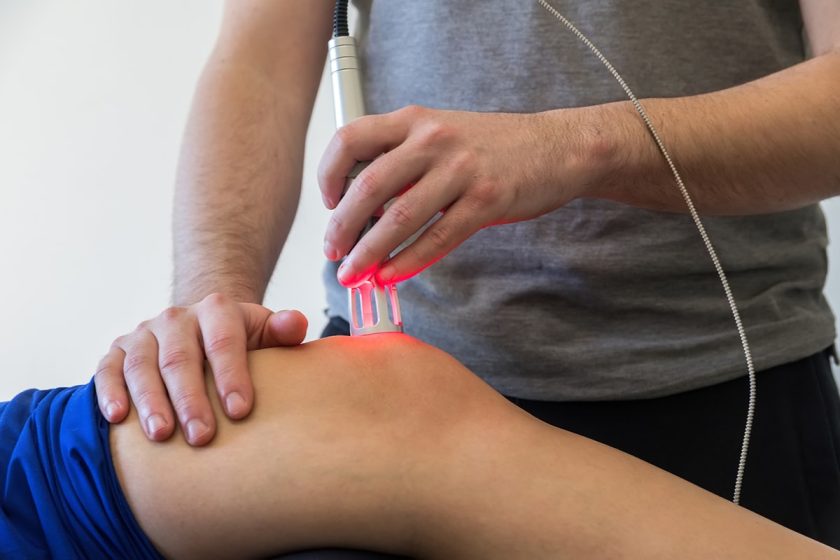Laser Therapy For Sciatica
Sciatica can be a debilitating condition characterized by pain, tingling, and numbness that radiates along the sciatic nerve, which runs from the lower back through the hips and down each leg. If you’ve been suffering from sciatica, you’re probably familiar with the limitations it can impose on your daily life. Thankfully, advancements in medical technology have led to the development of various treatment options, including laser therapy for sciatica, which has gained recognition for its effectiveness in managing sciatica. In this article, we will explore the benefits, risks, and considerations associated with laser therapy for sciatica.
Understanding Sciatica
Sciatica occurs when the sciatic nerve becomes compressed or irritated, often due to a herniated disc, spinal stenosis, or bone spur. This compression leads to the characteristic symptoms experienced by individuals with sciatica. The pain can range from mild to severe, and it may be accompanied by muscle weakness and difficulty moving or controlling the affected leg.
What Is Laser Therapy?
Laser therapy, also known as low-level laser therapy or cold laser therapy, is a non-invasive treatment modality that uses specific wavelengths of light to stimulate cellular activity and promote healing. It is a painless procedure that involves the application of a laser device to the affected area, allowing the light energy to penetrate the skin and reach the underlying tissues.
How Does Laser Therapy Work For Sciatica?
Laser therapy works by stimulating cellular activity within the affected area. The photons emitted by the laser device are absorbed by the cells, which triggers a cascade of biochemical reactions. This process promotes cellular regeneration, reduces inflammation, and alleviates pain. Additionally, laser therapy increases blood flow to the treated area, delivering oxygen and nutrients that aid in the healing process.
Benefits Of Laser Therapy For Sciatica
Pain Reduction: Laser therapy can significantly reduce sciatic pain by decreasing inflammation and promoting tissue repair. Many patients report immediate pain relief after undergoing laser therapy sessions.
Non-Invasive And Painless: Unlike surgical interventions, laser therapy is a non-invasive procedure that does not require incisions or anesthesia. It is a painless treatment option that minimizes discomfort during and after the sessions.
Accelerated Healing: Laser therapy stimulates the production of adenosine triphosphate (ATP), which provides energy to cells and accelerates their healing process. This can help expedite recovery and improve overall outcomes for individuals with sciatica.
Minimal Side Effects: Laser therapy is generally safe, and the risk of adverse effects is minimal. Unlike certain medications or invasive procedures, laser therapy does not pose a significant risk of systemic side effects.
Complementary Treatment: Laser therapy can be used in conjunction with other treatment modalities for sciatica, such as physical therapy or chiropractic care. It complements these interventions by enhancing their effectiveness and promoting better overall outcomes.
Risks And Side Effects
While laser therapy is considered safe for most individuals, there are a few potential risks and side effects to be aware of. These may include mild skin irritation, redness, or temporary discomfort in the treated area. It is crucial to consult with a qualified practitioner and discuss your medical history and any existing conditions before undergoing laser therapy.
Laser Therapy vs. Other Treatment Options
Laser therapy offers several advantages over traditional treatment options for sciatica. Unlike medications, it does not carry the risk of systemic side effects or drug interactions. Additionally, it is a non-invasive alternative to surgical interventions, which often involve longer recovery times and potential complications. However, the choice of treatment depends on the severity of your condition and the recommendation of your healthcare provider.
Finding A Qualified Practitioner
Therapist ridgefield ct,To ensure the best possible outcomes with laser therapy, it is essential to find a qualified practitioner who specializes in the treatment of sciatica. Look for a healthcare professional with expertise in laser therapy and a track record of success in treating sciatica. Ask for recommendations, read reviews, and schedule a consultation to discuss your specific needs and expectations.
What To Expect During Laser Therapy Sessions
Laser therapy sessions are typically conducted in a healthcare professional’s office or a specialized clinic. The duration and frequency of the sessions may vary depending on the severity of your condition and the treatment plan recommended by your practitioner. During the session, you will be positioned comfortably, and the laser device will be applied to the affected area. The treatment is painless and usually lasts between 5 to 20 minutes per session.
Precautions And Considerations
While laser therapy can be highly effective for managing sciatica, there are a few precautions and considerations to keep in mind:
Consultation
Before starting laser therapy, consult with a healthcare professional to determine if you are an appropriate candidate for this treatment.
Treatment Plan
Follow the recommended treatment plan provided by your practitioner, including the number of sessions and any accompanying therapies.
Lifestyle Modifications
In addition to laser therapy, adopting healthy lifestyle habits, such as regular exercise, maintaining proper posture, and managing weight, can help alleviate sciatic pain and improve overall well-being.
Long-Term Management
spinal decompression therapy san antonio may provide relief from acute sciatic pain, but it is essential to address the underlying causes of your condition for long-term management. Work with your healthcare provider to develop a comprehensive treatment approach.





